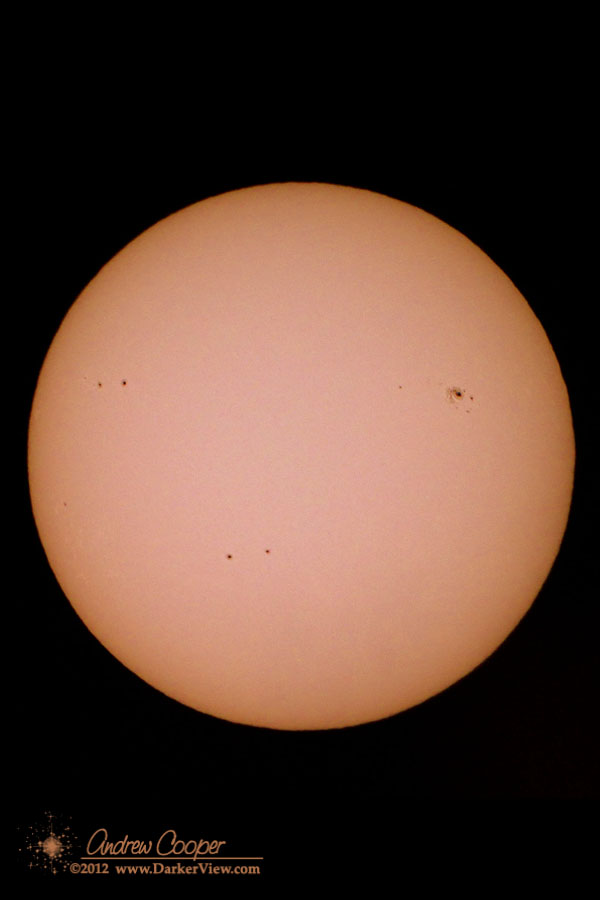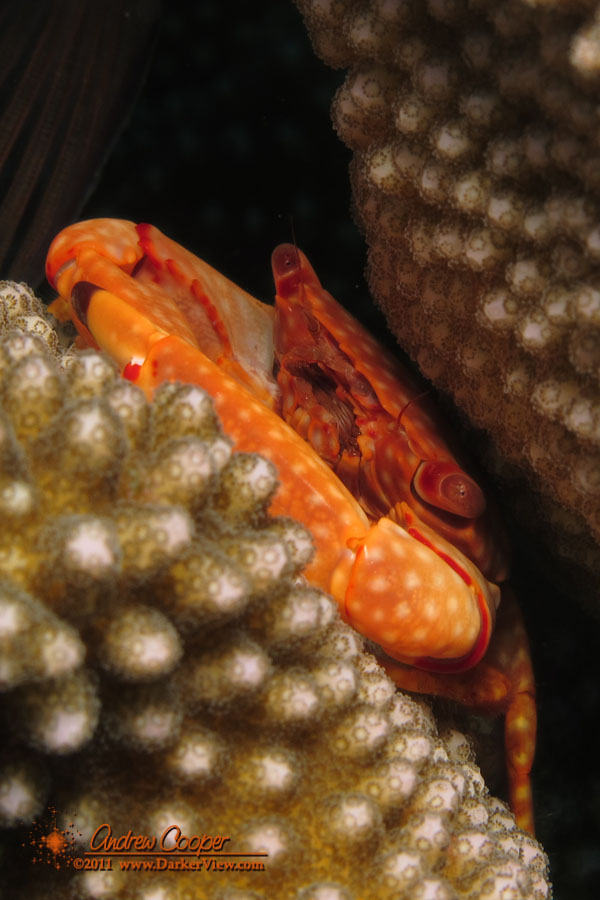
Viewing the Transit of Venus on Hawaii
There is only one more chance in our lifetimes to see a Transit of Venus. If you are curious about this event, where do you go to see it?
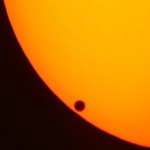
For those folks who just want a nice view of the event, and do not necessarily need to watch for the entire seven hours, there are a number of easier options. To accommodate the public, there will be solar telescopes setup and manned by volunteers at a number of locations around the island…
- Mauna Kea Visitor Information Station (MKVIS) A portion of the VIS parking lot will be converted into a viewing station. Telescopes with solar filters will be available. A NASA-sponsored live web cast of the Transit will be displayed inside the VIS and in the presentation room. Parking space at the VIS is limited. If parking fills, vehicles will be held below the VIS until parking becomes available. You may want to consider some of the other sites listed below.
- ʻImiloa Astronomy Center of Hawaii, Hilo ʻImiloa will display the NASA webcast of the Transit. Leading up to the day of Transit, ʻImiloa will also be running a special planetarium show titled “When Venus Transits the Sun.”
- W. M. Keck Headquarters, Waimea Livestream from the summit at headquarters in Waimea. Headquarters will be open until 6 p.m. Solar telescopes will be available. Free solar cards for viewing the Transit directly will be provided, while supplies last.
- Canada France Hawaii Telescope (CFHT), Waimea Solar telescopes and a sunspotter will be available for the public. A raffle for a copy of “Hokuloa: The 1874 Transit of Venus Expedition to Hawaii” by Michael Chauvin will also be held.
- Puʻu Koholā Heiau National Historic Site, Kawaihae From Noon till 4:30pm. Special glasses will be available, and a live webcast from the summit of Mauna Kea in the Visitor Center theater. As well, park rangers will give special presentations about the historical significance of this event throughout the day.
- Natural Energy Lab in Kailua-Kona Mahalo to the Natural Energy Lab for sponsoring this event!
- Keaʻau In the lot across from the Fire Station, Mahalo to W. H. Shipman Ltd for sponsoring this event!
Postcard from the Universe – An Active Sun
More Astronomy Haiku

Stars in the night sky
Keck Observatory sees
When was the Big Bang?
– Barbara Russell
Thanks to the work of a lot of astronomers and observatories, including Keck, we can answer that one… The Big Bang was 13.75 ±0.11 billion years ago.
Modern astronomy has allowed us to answer questions that have been asked for as long as curious humans have looked at the universe around us. Curiosity as expressed in a poem is part of what we are as humans. That is why we build and maintain the big telescopes. Thanks Barbara!
Preparing for the Venus Transit

First up? just setup the ‘scope in the driveway and take a few photos of the Sun. Just checking the photographic setup, the necessary parts and pieces. Nothing misplaced? Where did I store the solar filter? A nice focus on the camera? Perhaps take some nice photos of the large sunspots that current grace the surface of the Sun while I am set up. I hope we have some nice spots during the transit, they make focusing so much easier!
Next step is to get autoguiding operational, this will be a seven hour event and I really do not want to manually guide for the entire duration. Particularly with a telescope that was setup in the daytime and is not properly polar aligned.
A couple other steps remain in the preparation. Automate the camera to take photos at a regular interval. Insure I can provide a good video feed to the computer sending out the webcast. I do have a few more weeks to accomplish this. I am certain those weeks with speed by surprisingly quickly. Time to get ready!
Jupiter at Superior Conjunction
Today, Jupiter will pass through superior conjunction at 02:46HST. The planet will remain lost in the Sun’s glare for the remainder of the month, appearing in the dawn during the first days of June. The planet will arrive at opposition on December 2nd.
Throughout June, Jupiter will climb higher in the dawn. Towards the end of June the planet Venus will emerge from the Sun’s glare to race after Jupiter. The two will meetup for a brilliant morning conjunction during the first week of July.
Mercury Exits the Dawn
This week Mercury will be exiting the dawn sky, sliding closer to the Sun in our sky each day. It will pass through superior conjunction on May 27th, heading for an evening apparition beginning in the first days of June.
Better Elevation Bearings for an Orion XT8
A telescope needs to move smoothly, without any binding or sticking. The elegantly simple bearing design used in dobsonian telescopes uses a smooth surface riding on a small pad of some low friction material. This requires a pad of some material that slides smoothly and does not stick, to provide the motion. The standard answer of telescope builders is polytetrafluoroethylene, simply referred to by the acronym PTFE or the trade name Teflon.
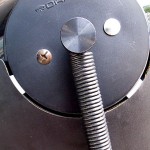
The price is excellent for an 8-inch telescope, but there is some sign of cost cutting in the more recent versions. One interesting difference I found in this ‘scope was the bearing material. The bearing pads that are supplied do not appear to be PTFE, but instead a much harder material, possibly HDPE instead, which would be cheaper than PTFE. replacing these with PTFE results in a nice improvement in the smoothness and ease of movement of the telescope.
This particular telescope was missing two bearing pads, so some replacement was required, whatever the material. Without access to the original parts it was necessary to obtain whatever material was available, and that would be PTFE. Since it came in a different thickness than the original bearing it was also necessary to replace all four pads.
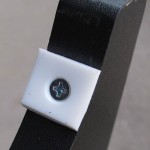
In place of the original staples, a small flat head screw is used to secure the Teflon in place. The soft material is easy to work. As long as the tools are sharp drilling and countersinking the pieces is easy. Best use a new drill bit if you have one, or grab one of the odd sizes that never seem to be used.
Position of the bearing around the radius of the trunnion have some impact into how easily the telescope will move. Positioned closer together and closer to the bottom of the bearing and the telescope will move more easily. Positions further part and higher on the bearing sides will result in more friction as the trunnion presses outwards against the pads.
The repair worked quite nicely, with a ‘scope that move smoothly across the sky. A bit more cleaning and a few minutes collimating the optics had the small telescope again ready for the sky.
Keck Lecture – Dr. Brian Siana
On Thursday, May 10, 2012, Keck Observatory hosted a live webcast of an astronomy talk by Dr. Brian Siana of the University of California at Riverside. Below is the recording of that talk, which was delivered to a live audience at the Kahilu Theatre in Kamuela-Waimea, Hawaii.
The first galaxies had an extraordinary impact on the young universe. Their ultraviolet light destroyed nearly all of the atoms in the cosmos. This process, called reionization, had severe consequences for galaxies trying to form thereafter. Unfortunately, we have no idea how it happened. In galaxies today ultraviolet light cannot escape, so the first galaxies must have been very different from those we see today. Dr. Siana will describe the quest to detect these first galaxies and their impact on the early universe.
Astronomy Haiku
You remember haiku? Three lines, the first line with five syllables, a second line with seven syllables, and a last line with five syllables. It may be poetry, but this is easy poetry to write, a short verse with an elegant cadence.
For an AstroDay activity, Keck held an astronomy haiku project. We have a stack of entries we are just now getting a chance to read. Winners are not yet decided, but I have found a few that are wonderful, and worth giving some recognition to.
I should be clear, these are my favorites! Not necessarily the contest winners.
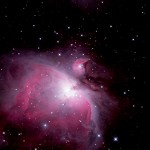
Telescopes are great
They make you see very far
I love telescopes
-Madison Kobayashi (age 9)
Stars shining brightly
I look to them for comfort
In them I find you
-Lacey Siweila
Lacey is over 18 and not eligible for a prize in the contest. She knew this and enters a poem anyway. You have to love that!
The Moon is so bright
The stars help light up the night
Let’s lay out tonight
– Micah Timbresa (age 7)
All poems reproduced with permission.

